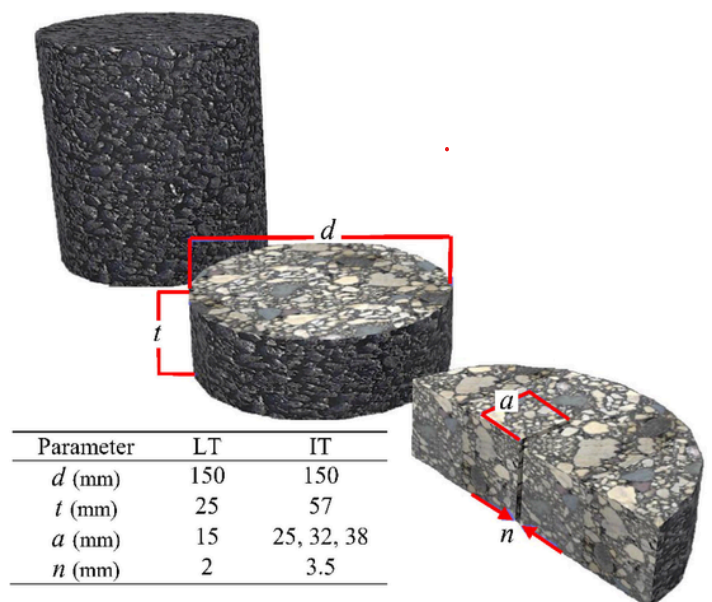
 Research Engineer @ Turner-Fairbank Highway Research Center (TFHRC)
Research Engineer @ Turner-Fairbank Highway Research Center (TFHRC)Genex Systems
Civil engineer, specilized in pavement engineering, materials characterization, and modeling.
With over 7 years of graduate academic experience, I am passionate about pavement and geotechnical engineering,
focusing on analyzing and designing pavements and roadways, as well as conducting high-level network analysis for
pavement management. My research focuses on the effects of climate change on pavement performance and pavement
structural analysis and design, where my findings published in prestigious conferences and journals such as the
Transportation Research Board (TRB), International Journal of Pavement Engineering (IJPE), and Construction and Building Materials (CBM), etc.
I have developed advanced programming skills to create practical tools and programs that facilitate industry-level
analyses. Throughout my academic journey, I have gained extensive experience in material testing, teamwork, and
leadership. I will complete my Ph.D. at Michigan State University in December 2024. Additionally, I hold a Master's
degree in road and transportation engineering and a Bachelor's degree in civil engineering, both from Sharif
University of Technology. I have received multiple honors for my academic excellence.
Warning
Problem: The current name of your GitHub Pages repository ("Solution: Please consider renaming the repository to "
http://".
However, if the current repository name is intended, you can ignore this message by removing "{% include widgets/debug_repo_name.html %}" in index.html.
Action required
Problem: The current root path of this site is "baseurl ("_config.yml.
Solution: Please set the
baseurl in _config.yml to "Education
-
 Michigan State UniversityPh.D. in Civil Engineering (Pavement Engineering)May. 2021 - Oct. 2024
Michigan State UniversityPh.D. in Civil Engineering (Pavement Engineering)May. 2021 - Oct. 2024 -
 Sharif University of TechnologyM.Sc. in Civil Engineering (Road and Transportation)Sep. 2017 - May. 2020
Sharif University of TechnologyM.Sc. in Civil Engineering (Road and Transportation)Sep. 2017 - May. 2020 -
 Sharif University of TechnologyB.Sc. in Civil EngineeringSep. 2013 - Sep. 2017
Sharif University of TechnologyB.Sc. in Civil EngineeringSep. 2013 - Sep. 2017
Experience
-
 Genex Systems | Turner-Fairbank Highway Research Center (TFHRC)Research Engineer at
Genex Systems | Turner-Fairbank Highway Research Center (TFHRC)Research Engineer at
Asphalt Binder and Mixture LaboratoryNov. 2024 - present
Honors & Awards
-
TRB Best Poster Award (AKP00(2) Subcommittee of Sustainable and Resilient Pavement)2025
-
TRB Best Poster Award (AKP30 Standing Committee of Design and Rehabilitation of Asphalt Pavements)2024
-
Outstanding Graduate Student Award (College of Engineering at Michigan State University)2024
-
Ranked 1st in Pavement Engineering Program at Sharif University of Technology2019
News
Selected Publications (view all )

UPDAPS-Flood: a mechanistic-empirical flexible pavement analysis tool to evaluate the effect of flooding events on flexible pavement performance
S. Farhad Abdollahi, M. Emin Kutay, M. Lanotte
International Journal of Pavement Engineering (IJPE) 2024
Flooding can cause considerable damage to flexible pavements and negatively affects their performance over time. This study aims to evaluate the flooding effects on the flexible pavement performance and the potential resiliency of the pavement network through a mechanistic-empirical (ME) pavement analysis approach. The Unified Pavement Distress Analysis and Prediction System (UPDAPS) programme, which includes ME analysis models, was used to develop the UPDAPS-Flood programme. A total of 7,655 flexible pavement sections were extracted from the Highway Pavement Management System (HPMS) database in three United States regions. Finally, the resiliency of the pavement network to flood events was quantified using the loss of pavement service life based on the international roughness index (IRI). The results showed that flooding has the highest impact on rutting performance, followed by IRI and fatigue cracking. It has been found that a proper drainage system can reduce the flooding impact by a factor of two. The predicted pavement performance was found to be very sensitive to the coefficients of the rutting model, which brings the need for further studies to re-calibrate the rutting prediction model at higher moisture content levels.
UPDAPS-Flood: a mechanistic-empirical flexible pavement analysis tool to evaluate the effect of flooding events on flexible pavement performance
S. Farhad Abdollahi, M. Emin Kutay, M. Lanotte
International Journal of Pavement Engineering (IJPE) 2024
Flooding can cause considerable damage to flexible pavements and negatively affects their performance over time. This study aims to evaluate the flooding effects on the flexible pavement performance and the potential resiliency of the pavement network through a mechanistic-empirical (ME) pavement analysis approach. The Unified Pavement Distress Analysis and Prediction System (UPDAPS) programme, which includes ME analysis models, was used to develop the UPDAPS-Flood programme. A total of 7,655 flexible pavement sections were extracted from the Highway Pavement Management System (HPMS) database in three United States regions. Finally, the resiliency of the pavement network to flood events was quantified using the loss of pavement service life based on the international roughness index (IRI). The results showed that flooding has the highest impact on rutting performance, followed by IRI and fatigue cracking. It has been found that a proper drainage system can reduce the flooding impact by a factor of two. The predicted pavement performance was found to be very sensitive to the coefficients of the rutting model, which brings the need for further studies to re-calibrate the rutting prediction model at higher moisture content levels.

MatFEA: Efficient Finite Element Framework for Analyzing Pavement Structures With Nonlinear Unbound Materials
S. Farhad Abdollahi, M. Emin Kutay, Mahdi Ghazavi
Transportation Research Record (TRR) 2023
This paper reports the details of a computationally efficient finite element analysis code (called MatFEA), designed specifically for flexible pavements, where stress-dependent characteristics of unbound layers are considered. The stress-dependent nonlinearity of the unbound materials has been modeled in MatFEA through an iterative approach. MatFEA was mainly developed to improve the Mechanistic-Empirical Asphalt Pavement Analysis (MEAPA) web application with capability of analysis/design of nonlinear pavement structures. A specific-purpose mesh generation algorithm was developed for the MatFEA in which the mesh density was dynamically adjustable based on the expected stress magnitude. To verify the results of the MatFEA, 12,000 nonlinear pavement structures with different structural and loading properties were generated and analyzed with MatFEA. The same pavement structures were modeled in a general-purpose FE-based ABAQUS™ program. The results of this study showed that the critical pavement structural responses from the MatFEA were almost identical with those modeled by ABAQUS™ program. The average runtime of MatFEA for analyzing each pavement structure was about 1.13 s. Finally, it was concluded that application of the dynamically adjustable mesh generation algorithm in the MatFEA helped achieve a reasonably high accuracy as well as efficient runtime, which brings the advantage of implementing the MatFEA as a pavement structural response model in the mechanistic-empirical pavement analysis/design procedures.
MatFEA: Efficient Finite Element Framework for Analyzing Pavement Structures With Nonlinear Unbound Materials
S. Farhad Abdollahi, M. Emin Kutay, Mahdi Ghazavi
Transportation Research Record (TRR) 2023
This paper reports the details of a computationally efficient finite element analysis code (called MatFEA), designed specifically for flexible pavements, where stress-dependent characteristics of unbound layers are considered. The stress-dependent nonlinearity of the unbound materials has been modeled in MatFEA through an iterative approach. MatFEA was mainly developed to improve the Mechanistic-Empirical Asphalt Pavement Analysis (MEAPA) web application with capability of analysis/design of nonlinear pavement structures. A specific-purpose mesh generation algorithm was developed for the MatFEA in which the mesh density was dynamically adjustable based on the expected stress magnitude. To verify the results of the MatFEA, 12,000 nonlinear pavement structures with different structural and loading properties were generated and analyzed with MatFEA. The same pavement structures were modeled in a general-purpose FE-based ABAQUS™ program. The results of this study showed that the critical pavement structural responses from the MatFEA were almost identical with those modeled by ABAQUS™ program. The average runtime of MatFEA for analyzing each pavement structure was about 1.13 s. Finally, it was concluded that application of the dynamically adjustable mesh generation algorithm in the MatFEA helped achieve a reasonably high accuracy as well as efficient runtime, which brings the advantage of implementing the MatFEA as a pavement structural response model in the mechanistic-empirical pavement analysis/design procedures.

Cracking performance of rubberized RAP mixtures with Sasobit
S. Farhad Abdollahi, Mohammad M. Karimi, Hamid Jahanbakhsh, Nader Tabatabaee
Construction and Building Materials (CBM) 2022
Incorporation of reclaimed asphalt pavement (RAP) and crumb rubber (CR) materials into asphalt mixtures have been of great importance from sustainability point of view. Although, inclusion of RAP materials in asphalt mixtures improves the rutting resistance at high temperature, the low temperature (LT) and intermediate temperature (IT) cracking performance of RAP mixtures may need additional considerations. In this regard, different schemes of modification have been applied to RAP mixtures to address its performance weaknesses. This study evaluated the effect of RAP and CR in combination with Sasobit and hydrated lime on the cracking performance of asphalt mixtures. The LT and IT semi-circular bending (SCB) tests showed that up to 15% CR modification improved the cracking resistance. However, at 18% CR fatigue performance of the RAP mixture slightly declined. This is attributed to the insufficient binder content in the asphalt mixture leading to the reduced fatigue performance of the mixture. The results also emphasized the use of WMA additive, as workability promoter, for improving the IT cracking performance of rubberized RAP mixtures. Finally, an overall assessment approach was utilized to select the asphalt mixture with best overall performance while upholding the sustainability considerations. In this regard, the combined application of Sasobit and CR modification to the RAP mixtures resulted in an overall better performance compared to that of the control mixture.
Cracking performance of rubberized RAP mixtures with Sasobit
S. Farhad Abdollahi, Mohammad M. Karimi, Hamid Jahanbakhsh, Nader Tabatabaee
Construction and Building Materials (CBM) 2022
Incorporation of reclaimed asphalt pavement (RAP) and crumb rubber (CR) materials into asphalt mixtures have been of great importance from sustainability point of view. Although, inclusion of RAP materials in asphalt mixtures improves the rutting resistance at high temperature, the low temperature (LT) and intermediate temperature (IT) cracking performance of RAP mixtures may need additional considerations. In this regard, different schemes of modification have been applied to RAP mixtures to address its performance weaknesses. This study evaluated the effect of RAP and CR in combination with Sasobit and hydrated lime on the cracking performance of asphalt mixtures. The LT and IT semi-circular bending (SCB) tests showed that up to 15% CR modification improved the cracking resistance. However, at 18% CR fatigue performance of the RAP mixture slightly declined. This is attributed to the insufficient binder content in the asphalt mixture leading to the reduced fatigue performance of the mixture. The results also emphasized the use of WMA additive, as workability promoter, for improving the IT cracking performance of rubberized RAP mixtures. Finally, an overall assessment approach was utilized to select the asphalt mixture with best overall performance while upholding the sustainability considerations. In this regard, the combined application of Sasobit and CR modification to the RAP mixtures resulted in an overall better performance compared to that of the control mixture.